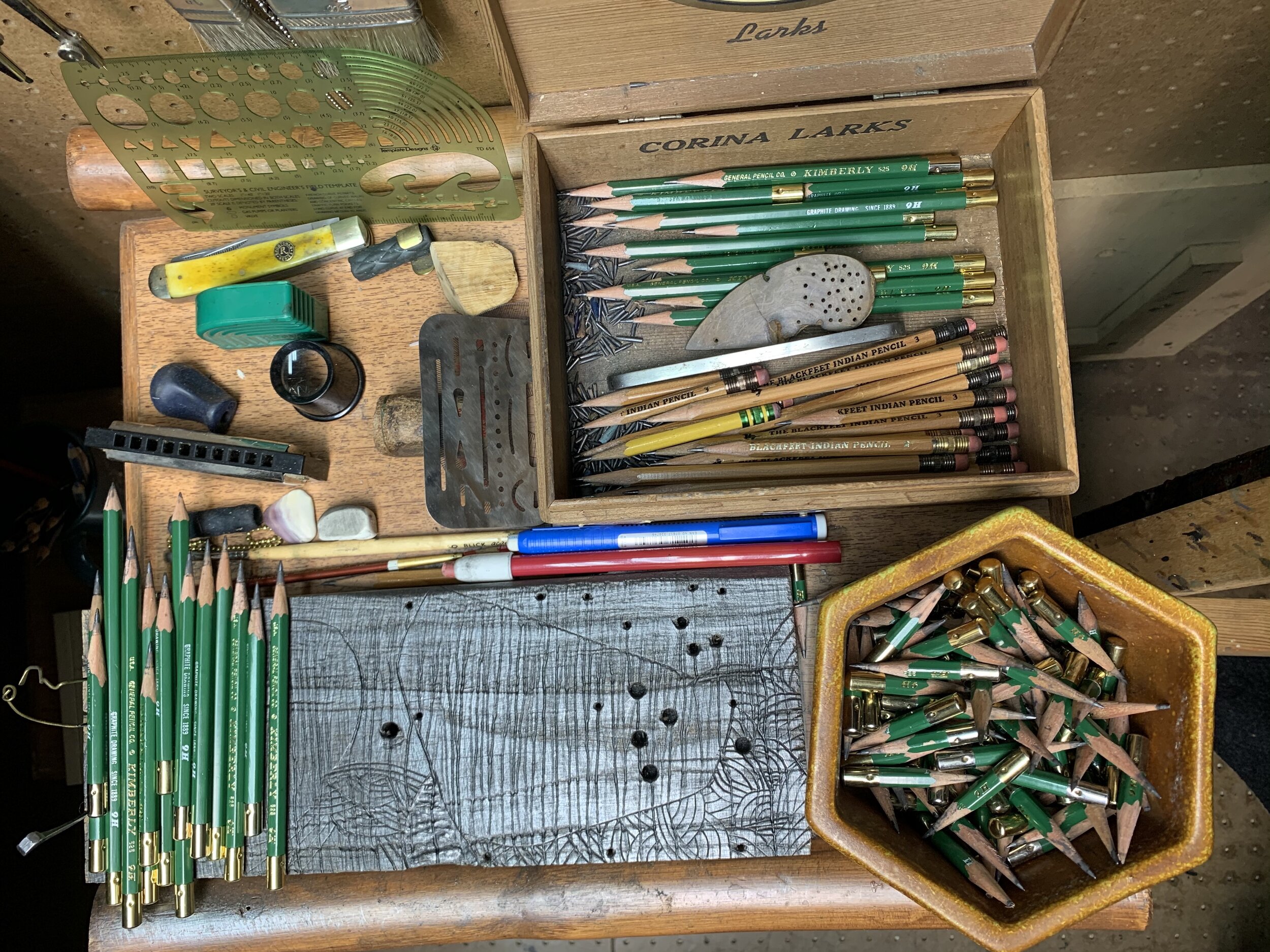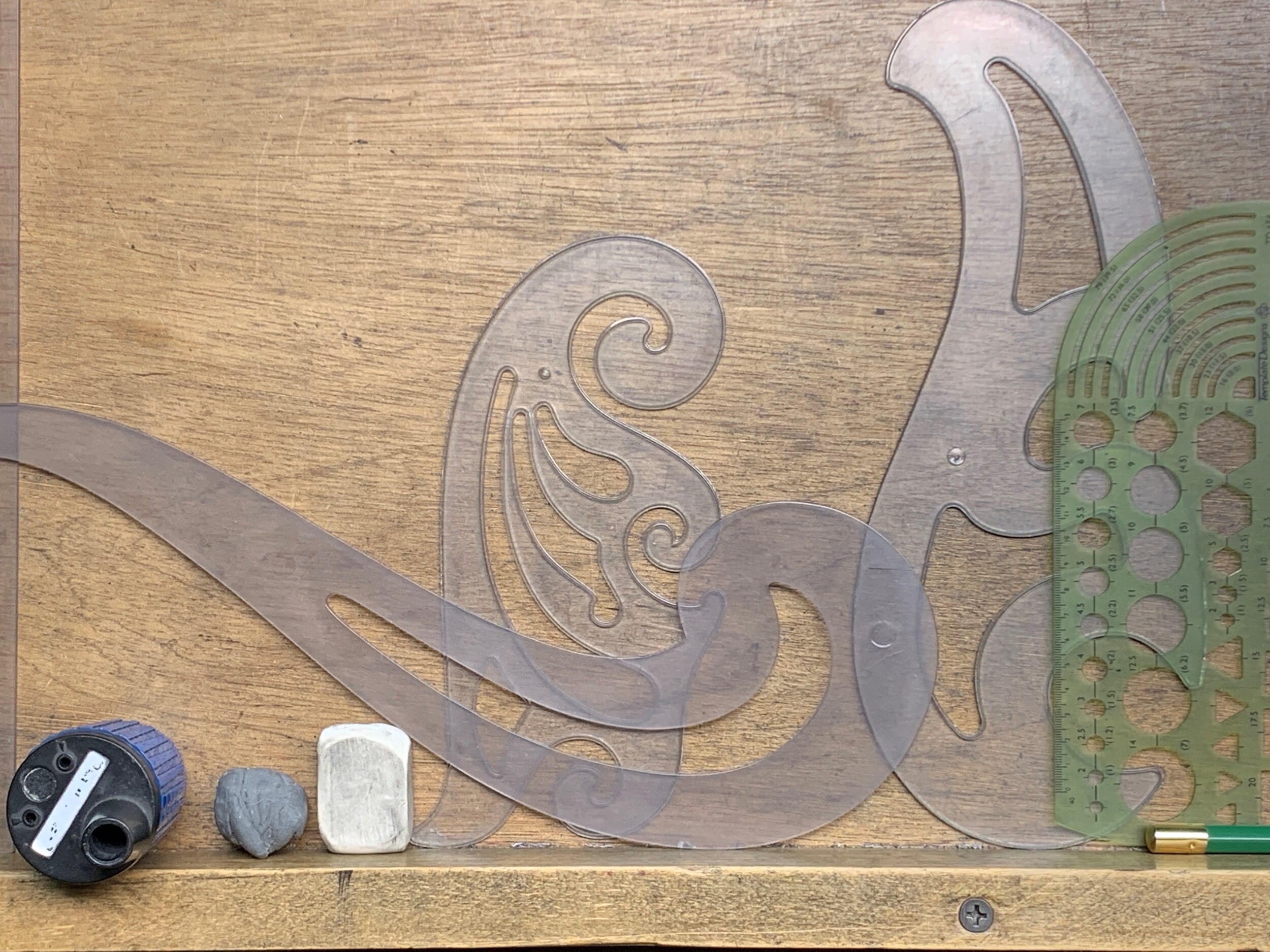
About
Known for his strikingly intricate graphite drawings, Tegland believes his drawings to be a combination of his wondering mind and hand connecting to a thought and then scribing it.
Tegland’s love for drawing started at a young age. For as long as he can remember, he would doodle on random items in his childhood home—everything from a Mickey Mouse record player, to the underside of his mother’s sewing machine chair. He always had the need to express himself and create things with his hands.
He took his first art class in high school, which focused on still lives and realism, realizing it was not his strength. Thinking you had to be good at realism to be good at art, he didn’t take another art class again. It wasn’t until a friend introduced him to non-objective art at age 18 that he decided to go to school for it.
He attended the University of Nebraska-Omaha in the 70s, where his love for art grew, particularly under the mentorship of artist and professor, Peter Hill, whom he credits for developing his aesthetic of geometric and organic shapes and patterns. During that time, Tegland’s work was more in line with hard-edge painting, learning much of his approach from Hill.
After college, he went the opposite direction to abstract expressionism—using thick paint, dried pigments, and encaustic techniques. He continued with this style for years, until he started getting frustrated with the art he was creating and decided to make a change. Not sure what direction to take, he kept going back to the doodling he enjoyed as a child. He started experimenting with using graphite on canvases covered with black and green chalkboard paint. But unlike what he does today, he used the graphite more like a solid color—repeatedly drawing on the canvas until there was a shield of graphite.
There came a point where using graphite on canvas became too difficult, so he transitioned to using birch plywood. He started honing in on his drawing skills and began to love how mysterious the graphite looked on a black, matte surface. More recently, Tegland has transitioned to drawing on paper. Although he loves the way the black surfaces look, he struggled with how difficult it could be to see the amount of intricacy in his work. He experimented on paper for two years before he was happy with the results.
Tegland doesn’t spend a lot of time planning out his pieces, but instead will spend hours making lines or other markings until they start making sense. Forms start building on one another and he lets his intuition guide him. He loves the act of repetition and tends to repeat shapes to make one, cohesive whole. He states that his work reminds him of a child looking at the clouds, trying to find recognizable forms within them. Often, people will see shapes in his drawings that remind them of a familiar object. One person may see something completely different than the other, which is part of the beauty of them.
Equally influential to his art development was Tegland’s 30-year career as Chief Preparator at Joslyn Art Museum. He credits this experience in art management, working with scholars, and handling priceless pieces of art for the delicate attention to detail in his work
To Tegland, art is about having an outlet to express himself. He enjoys the process of finishing one piece and starting on another. The act of creating art is what drives him to continue persevering.



